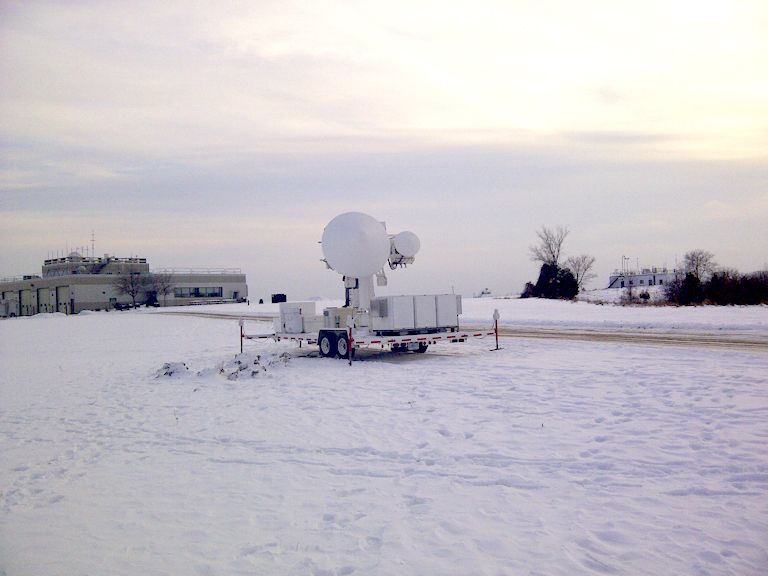GCPEx Scientists in the Operations Trailer

Image Caption
Dave Hudak (center) demonstrates the Environment Canada radar display in the operations trailer. Looking on are Walt Petersen (left) and Mark Kulie (right).


This radar scans the air column for snow falling from the
clouds to the ground. It uses two frequencies that together can determine
the shape and size of snowflakes, and the distribution of those sizes
throughout the clouds and snowing area.

This instrument measures microwaves that are naturally emitted from Earth's surface to determine water vapor and cloud and liquid water in the air column.